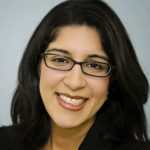ProInspire Strategy Update 3: Results from Internal Assessment
 By Monisha Kapila, Founder and CEO, ProInspire
By Monisha Kapila, Founder and CEO, ProInspire
As I described in our last blog post, ProInspire is in the midst of a strategy process to define our bold goal and set the course for the organization’s future. We have completed the first phase of the process, an Internal Assessment. The goal of the Internal Assessment was to help us understand our current state as seen by close stakeholders, and define our major strengths and assets that we can build on when developing strategies for future impact.
Sandy Stonesifer led our Internal Assessment phase of work, and sought to answer three questions:
- What are ProInspire’s greatest strengths?
- What are the opportunities moving forward?
- What are the driving or restraining forces at play as ProInspire looks to grow its impact?
Sandy conducted interviews with 20 ProInspire stakeholders, including staff, board members, alumni, and partners. Here are some of the key themes from the Internal Assessment:
What is working well now?
 Most of the answers to this question centered upon ProInspire’s flagship fellowship program. All respondents believe that the fellowship program fills a unique and important need in the social sector.
Most of the answers to this question centered upon ProInspire’s flagship fellowship program. All respondents believe that the fellowship program fills a unique and important need in the social sector.- Respondents felt it was important to look at what is working well from multiple perspectives:
- From the organizational perspective, ProInspire is a wonderful connector and service provider – providing organizations with much needed skills and talent. They provide a diverse set of candidates who organizations have difficulty finding elsewhere.
- From the individual participant perspective, ProInspire provides an “in” to the sector and a support network to aid the transition. Unique characteristics are the cohort structure, the strong training, staff’s accessibility as advisors, and the potential of staying on with their hiring organization after the fellowship ends.
- From the sectoral perspective, ProInspire is building broader leadership capacity. ProInspire encourages and enables increased diversity in the talent pool and models sector-wide collaboration through the cohort model.
Where is there room for improvement?
 Almost all respondents agreed that there is a need for a stronger vision and a better articulated organizational identity.
Almost all respondents agreed that there is a need for a stronger vision and a better articulated organizational identity.
- What is ProInspire’s unique value proposition? What are the outcomes the organization wants to be held accountable for achieving?
- All respondents talked about the need to “sustain and scale” ProInspire’s efforts in some way. This was mentioned particularly in terms of ProInspire’s limited financial and human capital resources and the toll these constraints are taking on ProInspire’s potential impact and growth.
- Several respondents see a need for ProInspire to further professionalize its alumni engagement, particularly in the Bay Area.
- Almost all respondents talked about the need to further systematize the fellowship program in order to scale .
- Several respondents discussed the need to enhance ProInspire’s impact at the organizational and sector levels.
- Almost all respondents agreed that the Founder’s time needs to be freed up to focus more on strategic leadership and external-facing activities rather than day-to-day programmatic work.
What are major challenges around talent and leadership development in the social sector?
 Overall, respondents see the major challenge as the lack of time, money, and capacity to focus on talent and leadership development in the social sector, particularly as compared to the private sector.
Overall, respondents see the major challenge as the lack of time, money, and capacity to focus on talent and leadership development in the social sector, particularly as compared to the private sector.- Several respondents cited the challenges associated with uncertain funding and nonprofit budgeting constraints (eg. limited overhead funds, less competitive compensation rates).
- Almost all respondents shared challenges around finding and retaining diverse talent, in terms of racial and ethnic diversity as well as diversity of skills and backgrounds.
- Several respondents cited a challenge unique to the fellowship experience, which is roles quickly plateaued after transitioning to full time staff – this was attributed to the fact that fellowships are explicitly seen as stretch and growth roles and that organizations may not be prepared to keep that focus on development up once the fellow has transitioned to staff.
The internal assessment helped us identify our strengths, opportunities, and broader challenges. My next blog post will be about our Strategy Steering Committee Kick-Off Meeting in April, where we discussed the internal assessment and areas to focus for the external assessment.
